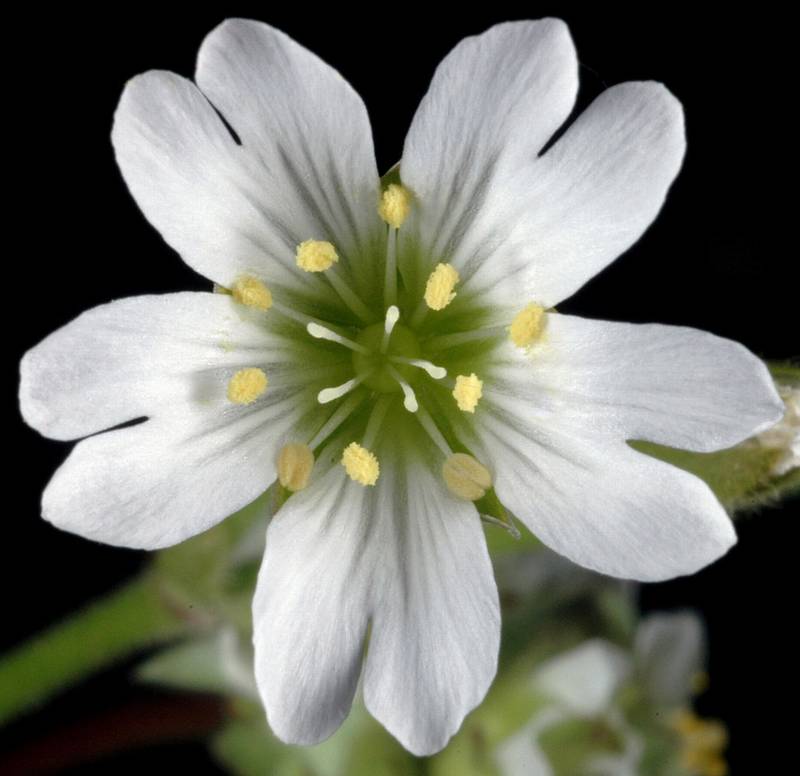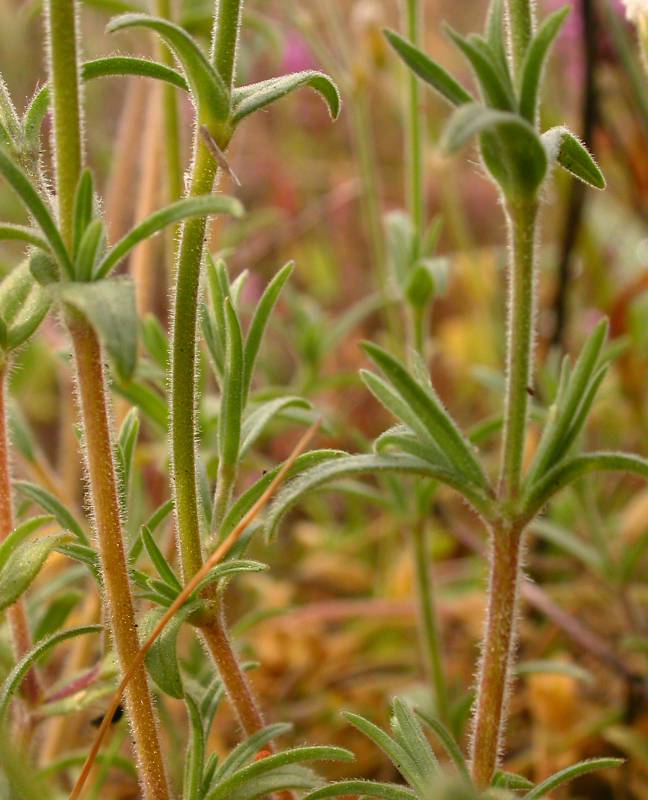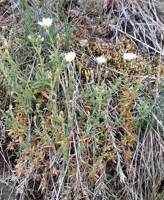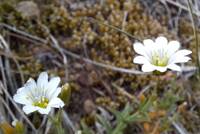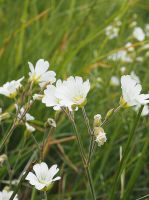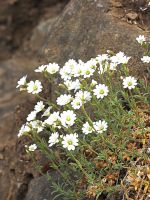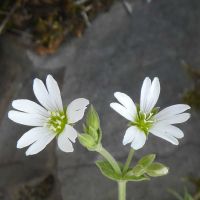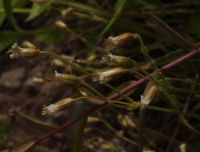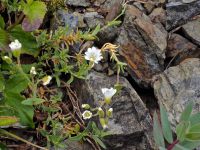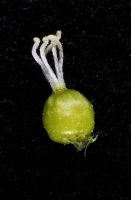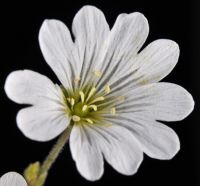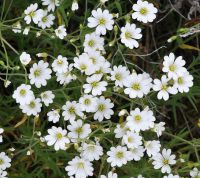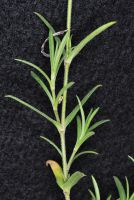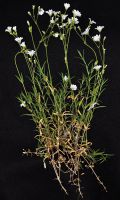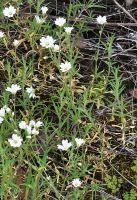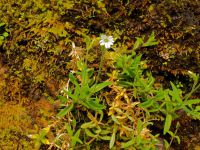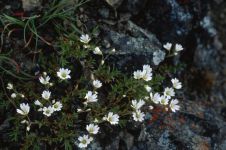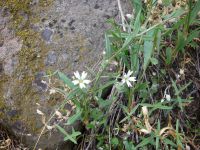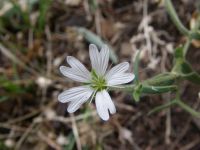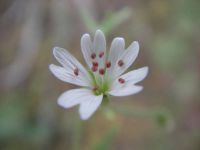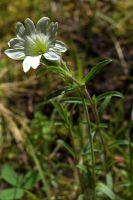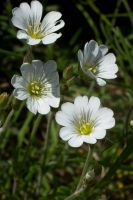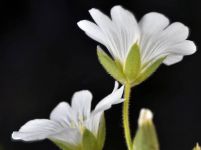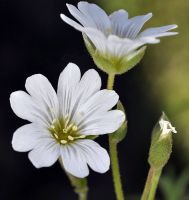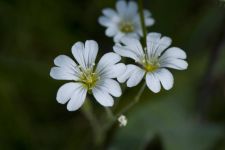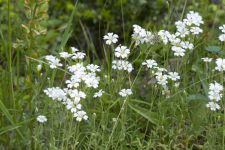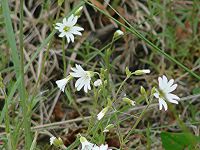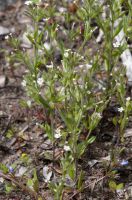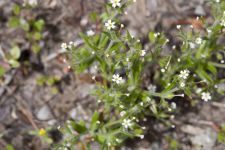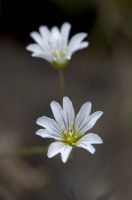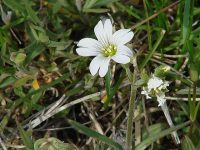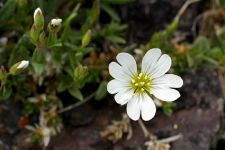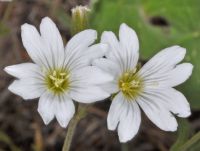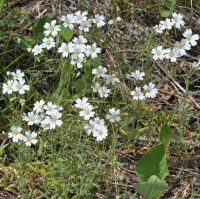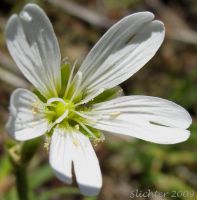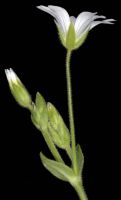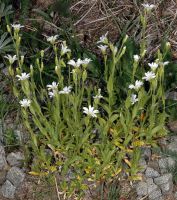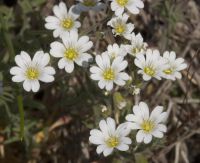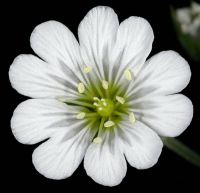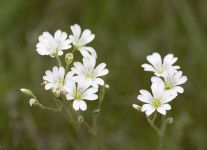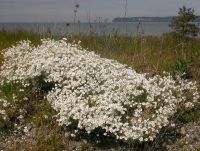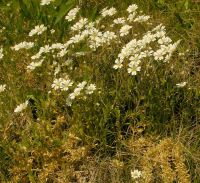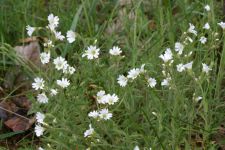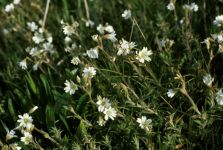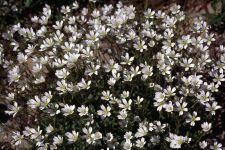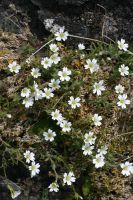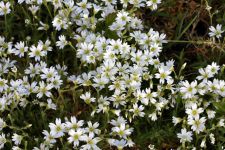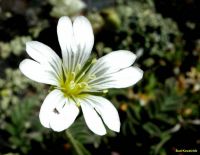Distribution: Occurring on both sides of the Cascades crest in Washington; Alaska to California, east across North America, except for the south-central and southeastern U.S., to the Atlantic Coast.
Habitat: Open slopes and meadows, from coastal cliffs and balds to inland valleys, rocky hillsides, forest openings, and subalpine meadows.
Flowers: April-August
Origin: Native
Growth Duration: Perennial
Conservation Status: Not of concern
Pollination: Bumblebees, bees, flies, beetles, wasps
Tufted perennial, often forming loose mats to 4 dm. broad, glabrous to glandular-pubescent, the flowering stems 5-50 cm. tall.
Leaves opposite, linear to narrowly lanceolate, 1-nerved, 1-3 cm. long; cauline leaves often with bundles of secondary leaves in their axils.
Flowers 3 to 5 or more in an open inflorescence; pedicels slender, erect, 1-3 cm. long; sepals 5, 4-6 mm. long, with stalked glands; petals 5, white, twice as long as the sepals, deeply bi-lobed-obcordate; stamens 10; styles 5.
Capsule membranous, cylindric, slightly curved, 1.5 times as long as the sepals, opening by 10 teeth.
Publication: Sp. Pl. 1: 438. 1753.
-
ssp. strictum – field chickweed
 Occurring on both sides of the Cascades crest in Washington; Alaska to California, east across North America, except for the south-central and southeastern U.S., to the Atlantic Coast.
Occurring on both sides of the Cascades crest in Washington; Alaska to California, east across North America, except for the south-central and southeastern U.S., to the Atlantic Coast.
PNW Herbaria: Specimen records of Cerastium arvense in the Consortium of Pacific Northwest Herbaria database.
WA Flora Checklist: Cerastium arvense checklist entry.
OregonFlora: Cerastium arvense information.
E-Flora BC: Cerastium arvense atlas page.
CalPhotos: Cerastium arvense photos.
USDA Plants: Cerastium arvense information.

